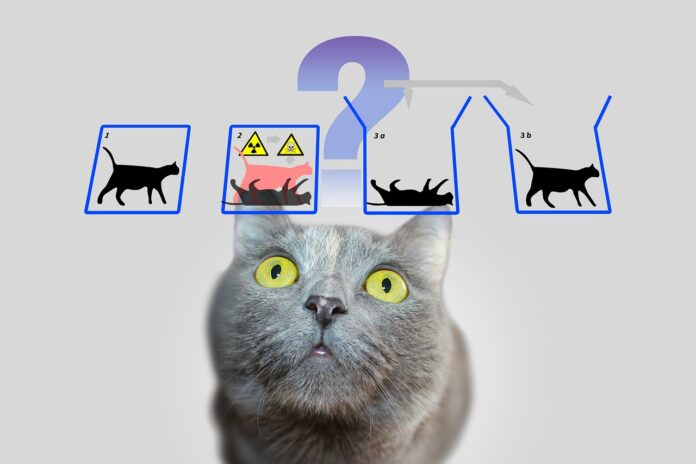In the realm of quantum mechanics, the Schrödinger equation stands as the cornerstone of understanding the behavior of quantum systems. This elegant mathematical equation, formulated by Austrian physicist Erwin Schrödinger in 1925, provides a powerful framework for describing the wave-like nature of particles and their quantum wavefunctions. In this article, we embark on a journey into the depths of the Schrödinger equation, exploring its significance and unraveling the mysterious world of quantum wavefunctions.
The Quest for a Unified Theory
In the early 20th century, as scientists grappled with the peculiarities of the quantum world, the need for a unified theory that could explain the behavior of particles and waves became apparent. The Schrödinger equation emerged as a breakthrough in this quest, offering a mathematical framework that could describe the wave-like nature of particles and their associated wavefunctions.
Wavefunctions: The Language of Quantum Mechanics
At the heart of the Schrödinger equation lies the concept of a wavefunction. A wavefunction is a mathematical representation that describes the state of a quantum system. It contains information about the probabilities of various outcomes when the system is measured.
In simple terms, the wavefunction of a particle encodes the probability distribution of finding the particle in different states. The square of the wavefunction, known as the probability density, provides the likelihood of observing the particle at a particular position or with a specific energy.
The Schrödinger Equation: Unraveling the Dynamics
The Schrödinger equation itself is a differential equation that describes how a quantum wavefunction evolves over time. It relates the time derivative of the wavefunction to its spatial derivatives and the potential energy of the system. The equation, typically written as
iħ∂ψ/∂t = -ħ²/2m∇²ψ + Vψ,
where i represents the imaginary unit, ħ is the reduced Planck constant, m is the mass of the particle, ∇² represents the Laplacian operator for spatial derivatives, V is the potential energy, and ψ represents the wavefunction.
The Schrödinger equation essentially describes the time evolution of the wavefunction, allowing us to predict how it changes over time and how it responds to different potentials. By solving this equation for a given system, scientists can extract valuable information about the behavior and properties of quantum systems.
Quantum States and Energy Levels
Solving the Schrödinger equation provides us with a set of possible wavefunctions, each corresponding to a different quantum state of the system. These wavefunctions form a discrete set of energy levels, each associated with a specific energy value. The lower energy levels correspond to more stable and bound states, while the higher energy levels represent more excited and unbound states.
The Schrödinger equation not only reveals the energy levels but also uncovers the probabilities of transitions between different states. These transitions, governed by the wavefunctions and their interactions with the potential energy, are responsible for the emission and absorption of photons, the formation of chemical bonds, and various other phenomena observed in the quantum realm.
Beyond the Schrödinger Equation: Advancing Quantum Mechanics
While the Schrödinger equation has played a pivotal role in advancing our understanding of quantum mechanics, it is important to note that it is not the sole equation that governs all quantum phenomena. In certain situations, other equations, such as the Dirac equation or the Klein-Gordon equation, are needed to accurately describe specific particlesand their behaviors.
Moreover, the Schrödinger equation is limited to non-relativistic quantum mechanics, applicable to particles moving at speeds much slower than the speed of light. When dealing with high-energy particles or systems where relativistic effects are significant, the equations of quantum field theory come into play.
Unleashing the Power of Quantum Mechanics
The Schrödinger equation, with its wavefunctions and mathematical elegance, has revolutionized our understanding of the microscopic world. It provides a powerful tool for predicting and analyzing the behavior of quantum systems, enabling scientists to explore a wide range of phenomena, from the behavior of electrons in atoms to the properties of complex molecules.
Furthermore, the Schrödinger equation forms the foundation for computational methods in quantum chemistry and materials science. Through numerical techniques, scientists can solve the equation to gain insights into the properties of materials, predict the behavior of chemical reactions, and design novel compounds with desired characteristics.
The Quest Continues: Quantum Mechanics and the Future
As we delve deeper into the mysteries of the quantum world, the Schrödinger equation remains a guiding light, illuminating our path towards new discoveries. Its mathematical framework continues to shape our understanding of quantum phenomena and inspire further developments in quantum technologies, such as quantum computing and quantum communication.
Yet, there are frontiers yet to be explored. Scientists strive to unify quantum mechanics with general relativity, seeking a comprehensive theory that can describe both the microscopic world of quantum mechanics and the macroscopic world of gravity and spacetime.
As the quest for a unified theory continues, the Schrödinger equation remains a cornerstone of modern physics, providing insights into the wave-like nature of particles and paving the way for a deeper understanding of the fundamental fabric of the universe.




